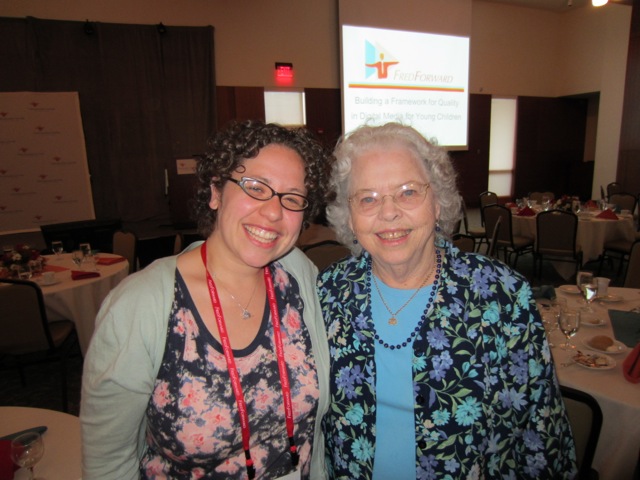 It's been an exciting three days down in LaTrobe, Pennsylvania at the Fred Rogers Center for the 2nd Fred Forward Conference. It was so great seeing old friends, colleagues, partners, clients and meeting lots of new super smart and talented new people. There were a lot of panels and discussion about guidelines and recommendations, communication about educational media, and quality in media products. Please check out our #FredForward tweets at @FVStudioBoston or head over to our Facebook photo album if you want to relive the conference minute by minute, but for now, I will present...
Top 5 Things I Learned at the Fred Forward Conference
I'm a huge fan of top five lists. It's long enough to be digestible; short enough to be memorable. So without further ado, here are the Top 5 Things I Learned from the Fred Forward Conference:
It's been an exciting three days down in LaTrobe, Pennsylvania at the Fred Rogers Center for the 2nd Fred Forward Conference. It was so great seeing old friends, colleagues, partners, clients and meeting lots of new super smart and talented new people. There were a lot of panels and discussion about guidelines and recommendations, communication about educational media, and quality in media products. Please check out our #FredForward tweets at @FVStudioBoston or head over to our Facebook photo album if you want to relive the conference minute by minute, but for now, I will present...
Top 5 Things I Learned at the Fred Forward Conference
I'm a huge fan of top five lists. It's long enough to be digestible; short enough to be memorable. So without further ado, here are the Top 5 Things I Learned from the Fred Forward Conference:
- ZPD. We should always remember the Zone of Proximal Development when developing and testing games for kids. Kids should be (and want to be!) challenged. Your game should be challenging enough that they don't dismiss it as too easy. Scaffolded enough so that they believe they can do it. We shouldn't give up on a game just because a kid doesn't "get it" right away in kid testing.
- Visual Superiority Effect. We do this a lot already at FableVision, but it was a good reminder that kids are more likely to attend to video than audio. Visual instructions are far more powerful than audio instructions.
- Conference Learning is Weird. Conferences revolving around innovation in education need to be innovative in how they educate. We can and should walk the walk and talk the talk. Sometimes the most knowledge you gain from a conference is on the bus ride and at the dinner table.
- Simulations are Weirder. We should be making interactive media that offers something that analog media (i.e.; real life) can't offer. Simulations will never replace the way kids actually learn, which is through their senses.
- Teachers are Our Best Partners. Teachers face incredible pressures and challenges in the classroom. We need to listen to, talk to, work with and involve them on how to best incorporate the media we create for the classroom.
Now it's time to get back to work…and to make the work even better.

